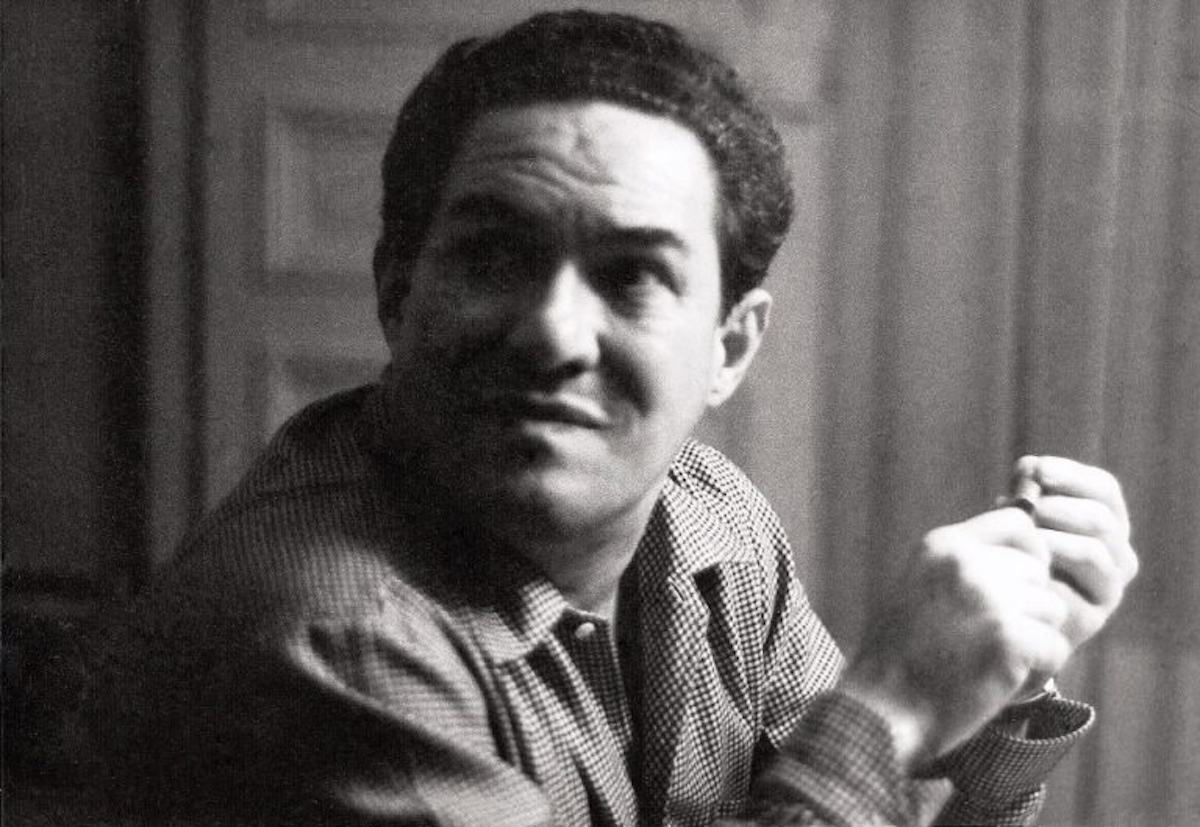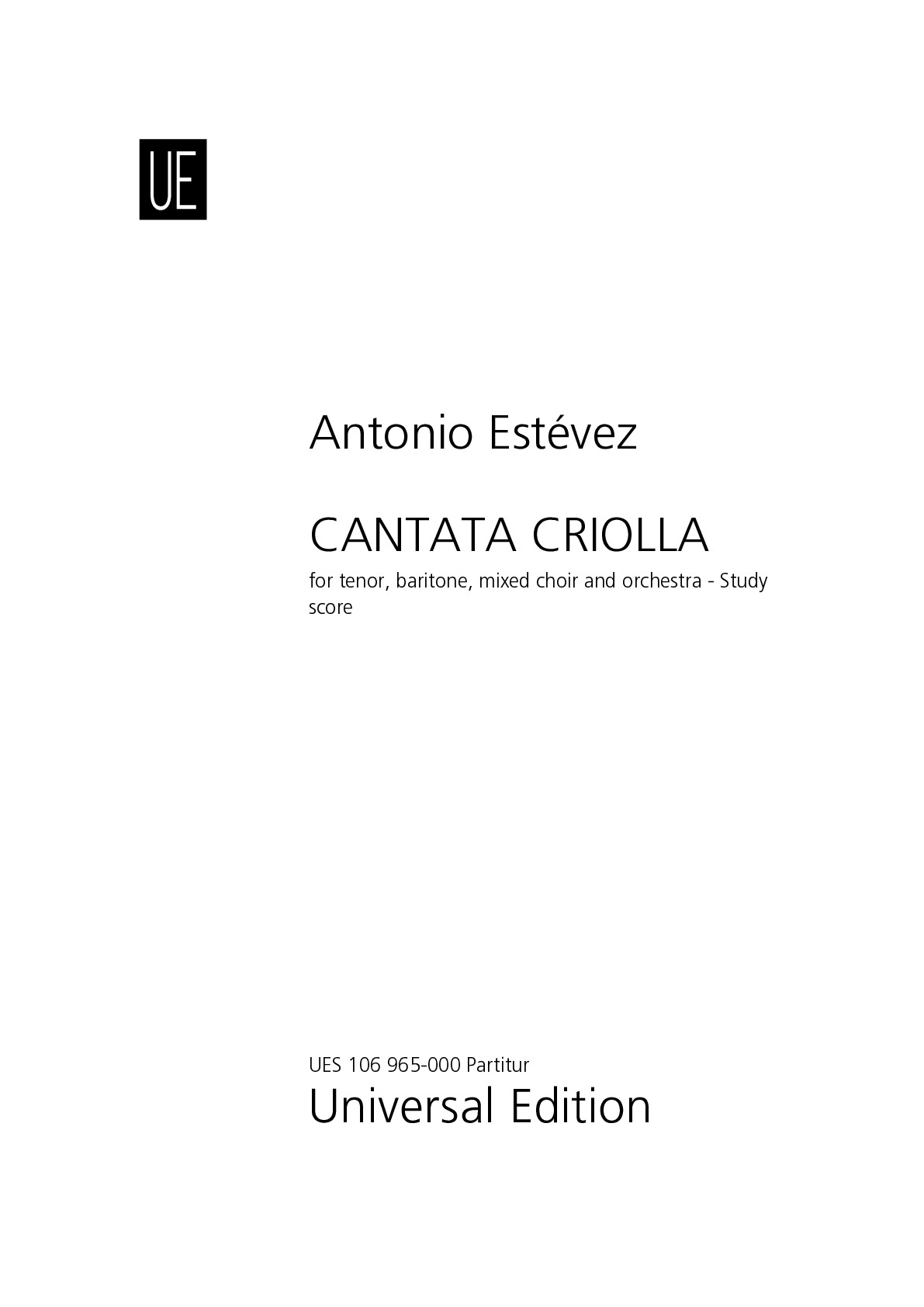

Antonio Estévez
CANTATA CRIOLLA
Duration: 40'
CANTATA CRIOLLA
Translation, reprints and more

Antonio Estévez
CANTATA CRIOLLAOrchestration: für Tenor, Bariton, gemischten Chor und Orchester - Studienpartitur
Type: Dirigierpartitur
Sample pages
Audio preview
Work introduction
Cantata Criolla, for tenor, baritone, mixed choir and orchestra (1954).
The piece is structured in three large-scale movements. The first, Lento e Cadencioso, establishes an epic mood with gestures that alternate between dramatic and atmospheric before the chorus enters to set the scene and backdrop from which the voice of the Devil emerges to issue his challenge. The chorus generally stays in a note-against-note texture, highlighting the words and underscoring the communal, oral tradition of the story and coplero tradition. Next comes 'El Reto' (The Challenge), thrown out confidently by the Devil, who is answered in more serious tones by Florentino, who invokes the land: 'Savanna, savanna, land that makes you sweat and love, as I have sung with all I have to sing with him.' The melodic material for the two characters makes use of two Gregorian chants: Ave maris stella for Florentino; Dies Irae for the Devil.
In the second movement, Lento, Tenebroso, shadowy passages for the low strings and woodwinds gradually accumulate tension and portray the gathering storm outside. Estévez occasionally makes use of tone-painting to portray the action in the scene: maracas (capachos) accompany references to that instrument sounding inside Florentino’s hut; sudden outbursts emphasize the metaphorical connection in the line: 'wandering choirs, wind of black fury.' Both scene and characters are elaborated by the chorus until in the last movement the contest ('La Porfía' or The Duel) gets going in the traditional manner in which each coplero adopts the last line of his opponent’s verse as the beginning line of his.
The most striking aspect of the Cantata is the way Estévez manipulates all the musical elements, but particularly timbre and rhythm in a kind of crisis-cross relationship to suggest the evolving momentum of the contest. Against a mostly percussive orchestra, the voices are suspended, but within each the rhythm of the words either matches, overtakes, or floats above, that of the orchestra to reflect the emotional tenor of approach, parry, dropping back, then re-engaging – a kind of textural acceleration that is only later reflected in the tempo. At the end, each claims victory but Florentino outlasts his enemy by reciting holy verses, which the choir then takes over. The musical texture is the reverse of the opening, as the individual voices are submerged in the collective celebration of the holy verses. It’s an end perfectly suited to the land that proved, both literally and figuratively, such fertile creative ground for so many Americans.
Susan Key
